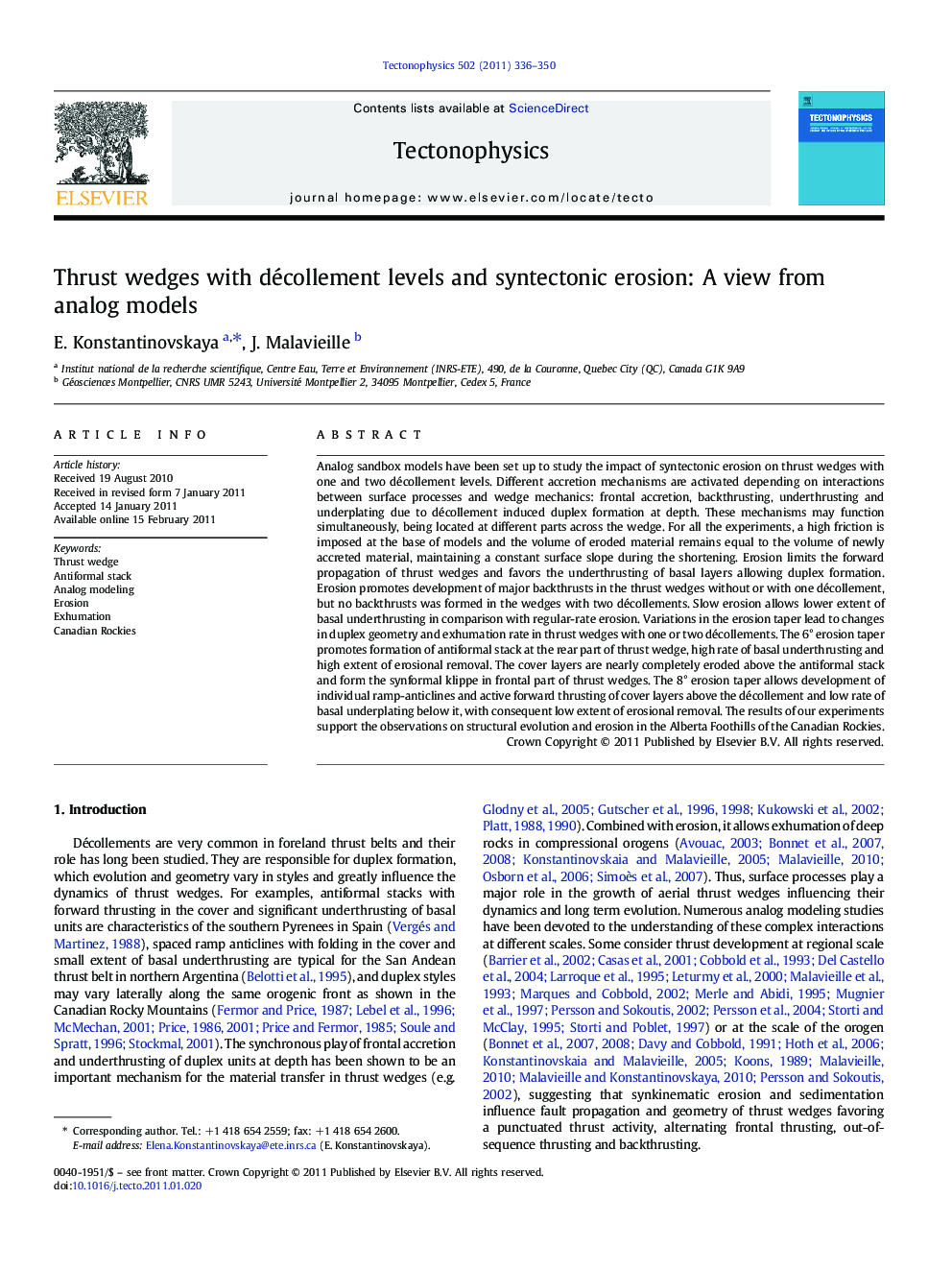| کد مقاله | کد نشریه | سال انتشار | مقاله انگلیسی | نسخه تمام متن |
|---|---|---|---|---|
| 4693129 | 1636848 | 2011 | 15 صفحه PDF | دانلود رایگان |

Analog sandbox models have been set up to study the impact of syntectonic erosion on thrust wedges with one and two décollement levels. Different accretion mechanisms are activated depending on interactions between surface processes and wedge mechanics: frontal accretion, backthrusting, underthrusting and underplating due to décollement induced duplex formation at depth. These mechanisms may function simultaneously, being located at different parts across the wedge. For all the experiments, a high friction is imposed at the base of models and the volume of eroded material remains equal to the volume of newly accreted material, maintaining a constant surface slope during the shortening. Erosion limits the forward propagation of thrust wedges and favors the underthrusting of basal layers allowing duplex formation. Erosion promotes development of major backthrusts in the thrust wedges without or with one décollement, but no backthrusts was formed in the wedges with two décollements. Slow erosion allows lower extent of basal underthrusting in comparison with regular-rate erosion. Variations in the erosion taper lead to changes in duplex geometry and exhumation rate in thrust wedges with one or two décollements. The 6° erosion taper promotes formation of antiformal stack at the rear part of thrust wedge, high rate of basal underthrusting and high extent of erosional removal. The cover layers are nearly completely eroded above the antiformal stack and form the synformal klippe in frontal part of thrust wedges. The 8° erosion taper allows development of individual ramp-anticlines and active forward thrusting of cover layers above the décollement and low rate of basal underplating below it, with consequent low extent of erosional removal. The results of our experiments support the observations on structural evolution and erosion in the Alberta Foothills of the Canadian Rockies.
Graphical AbstractFigure optionsDownload as PowerPoint slideResearch Highlights
► Erosion favors underthrusting of basal layers and duplex formation in thrust wedges with décollements.
► The under-critical erosion taper promotes formation of antiformal stacks.
► The critical erosion taper allows low rate of basal underplating under décollement and development of ramp-anticlines in cover layers.
► Sandbox models conform well to structures in the Canadian Rockies.
Journal: Tectonophysics - Volume 502, Issues 3–4, 20 April 2011, Pages 336–350